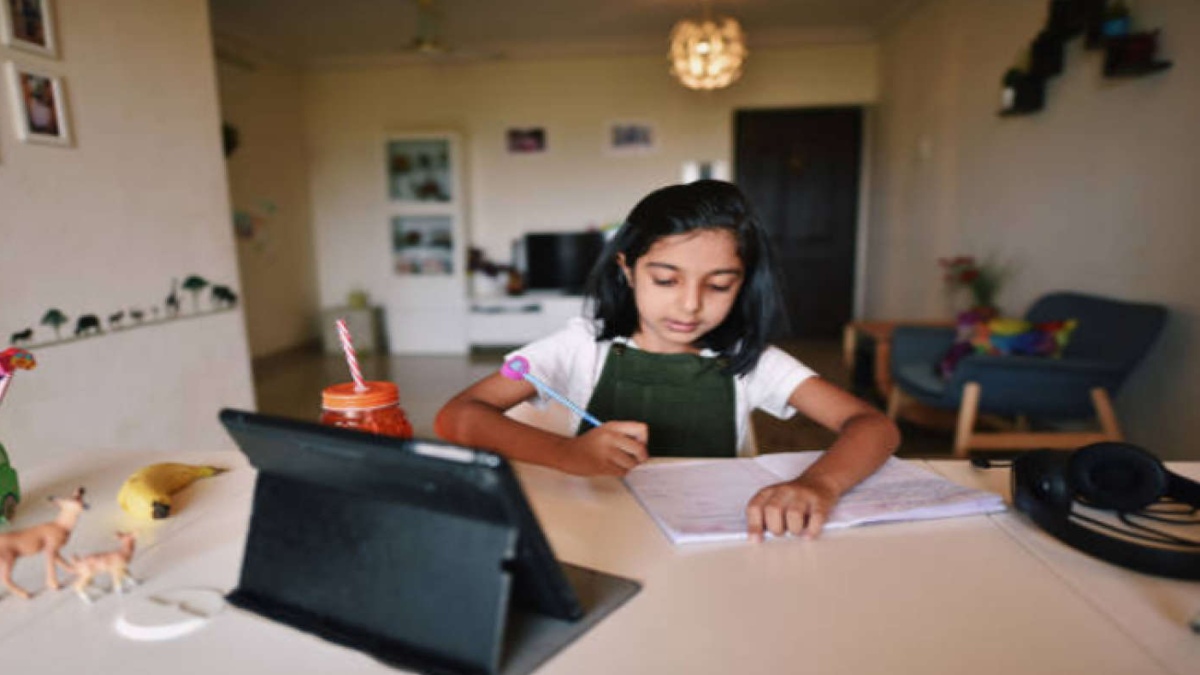PARTICIPATION IN ONLINE ACTIVITIES BEFORE AND DURING THE LOCKDOWN AND PREFERRED MODE OF EDUCATION (ONLINE OR OFFLINE)

PREFERENCE TO CONTINUE STUDYING THROUGH ONLINE MODES OF LEARNING DURING UNLOCK PERIOD AND EFFECT OF INCREASED USE OF DIGITAL TECHNOLOGY AND ONLINE EDUCATION ON THE MENTAL & PHYSICAL HEALTH OF STUDENTSINTERNET USAGE BEFORE, DURING AND AFTER LOCKDOWNNEW ONLINE/DIGITAL SKILLS LEARNING TENDENCY DURING LOCKDOWN


PARTICIPATION IN ONLINE ACTIVITIES BEFORE AND DURING THE LOCKDOWN AND PREFERRED MODE OF EDUCATION (ONLINE OR OFFLINE)

INTERNET USAGE BEFORE, DURING AND AFTER
LOCKDOWN


NEW ONLINE/DIGITAL
SKILLS LEARNING TENDENCY DURING LOCKDOWN

The Covid-19 pandemic made the year 2020 an annus horribilis. The yearwas one of the most challenging years in the history of the present human generation. A virus, known as the novel coronavirus, is considered to be the reason for the spread of the pandemic. This virus came in contact with human beings for the first time from other living beings and started affecting people at a mass level and could not be controlled because of the non-availability of any medicines, vaccines or other treatments. Medical professionals did not have any experience in dealing with and treating patients of Covid-19. Consequently, precaution became the only remedy.
The World Health Organization (WHO), the apex body of the medical sciences, came forward to protect humanity and issued necessary guidelines for the protection of people from this pandemic. But the guidelines issued by the WHO were very difficult to observe and follow because their implementation hampered basic human activities necessary for existence. But there was no option other than to follow them. The observance of these guidelines forced humanity to devise new techniques of interpersonal interaction, social distancing and performing daily activities.
Among such activities was the education of children, which is considered mandatory and can neither be avoided nor postponed for a long time. Before the outbreak of Covid-19, the easiest and best mode of the teaching-learning process was through face-to-face communication and interaction between teachers and students in regular classrooms. But as per WHO guidelines, for protection from Covid-19, children and students had to practise social distancing by maintaining a safe distance of 6 feet. Because of this, the ongoing educational process was suspended. Moreover, as per WHO guidelines, the existing infrastructure for academic activities was not sufficient or appropriate for conducting regular classes amid the pandemic. In this new, challenging and complex paradoxical situation, where on the one hand there was a pressure for the mandatory conduction of academic activities, and on the other, a non-availability of sufficient and appropriate infrastructure, the government and academic institutions adopted the online education system as an alternative to face the challenge.
Academic institutions have been using the online mode of education even before the outbreak of Covid-19, but its effectiveness has been tested during the pandemic. To find out the effectiveness, utility and appropriateness of the online mode of education, a study was conducted. The population for the research study consisted of UG and PG students of various universities, educational institutions and training centres. A sample of more than 2,000 students, both male and female, was taken for the study. The questionnaire method of data collection was used with the help of Google Forms. The findings of the study are as under:
The above table shows a comparative analysis of the Internet usage time pattern of 2050 respondents during lockdown, pre-lockdown and post-lockdown. It is evident from the data given in the table that there is a significant change in the time spent on the Internet by the respondents during the three different periods. First, there is a sharp increase in the percentage of hours spent online during the lockdown. This may be due to an increase in online activities and a change in the study pattern from offline to online mode. Thereafter, during the ‘unlock’ period a noticeable decline can be seen.
This table reveals the impact of the lockdown on the respondents’ participation in online activities such as online courses, workshops and webinars, and also their preference for online or offline education. The table exhibits a significant increase in participation in online courses/webinars/workshops during the lockdown period. This may be attributable to the fact that the online mode was the only option available during this period. The overall preferences of the respondents between online and offline education indicate that 62% respondents prefer a balanced combination of the online and offline modes of learning.
The table given above depicts the tendency of respondents for learning new online/digital skills during the lockdown period. Analysis of the data given in the table indicates a significant increase in the tendency of respondents for learning new online/digital skills during the lockdown.
An increased awareness and practice of digital technology has led to an increase in the comfort level of the respondents in the use of the online mode of education. The given table exhibits that the majority of respondents have become comfortable with the online mode of education due to improved knowledge and practice of digital technology.
Data was also collected and analysed for investigating the impact of the Covid-19 pandemic and the subsequent lockdown on the respondents’ studies, and analysis reveals that 75% of respondents believe that their studies have been adversely affected due to the Covid-19 lockdown.
The choices of the respondents between offline and online modes of education indicate that the online mode is preferred. 52% of the respondents prefer an online mode of learning due to fear of Covid-19. This may be attributable to factors such as uncertainty over Covid-19 vaccine development, fear of infection and maintenance of social distancing norms. The given table also illustrates the effect of the increased use of digital technology on an individual’s mental and physical health. Data clarifies that increased time spent towards the online mode of education has had an adverse effect on the mental and physical health of the respondents.
The findings of the study can be summarised as: During the Covid-19 lockdown, there has been an increase in the use of digital technology for online education because of increased online coursework, webinars and teaching-learning processes. Because of this, students have spent more time on the internet each day. On the one hand, this has increased their familiarisation with new skills in digital technology in the comfort of their homes. On the other hand, it has adversely affected their mental and physical health. As a result, a large number of respondents still prefer the offline mode and an even larger percentage, 62% of all respondents, believe that a balanced combination of the online and offline modes is more relevant in today’s context.
Prof Rishipal is Professor & Dean H&AS, SVSU, Haryana. Dr Jyoti Sheoran is Chairperson of Department of English, CRSU, Jind, Haryana. Dr Jaipal Mehra is AR & PRO, SVSU, Haryana. Dr Nidhi Jain is Assistant Professor, Gurugram University. Ms Pallavi is Assistant Professor, CRSU, Jind.























